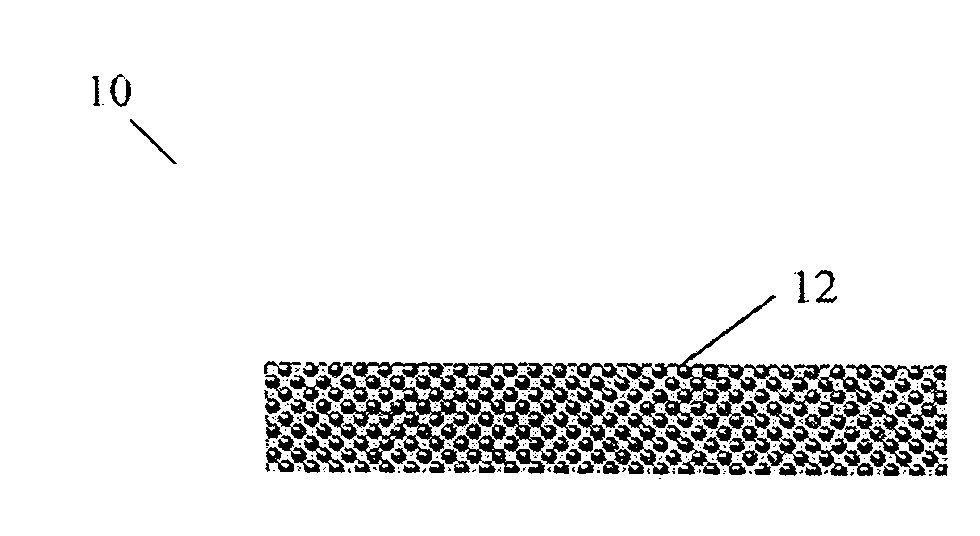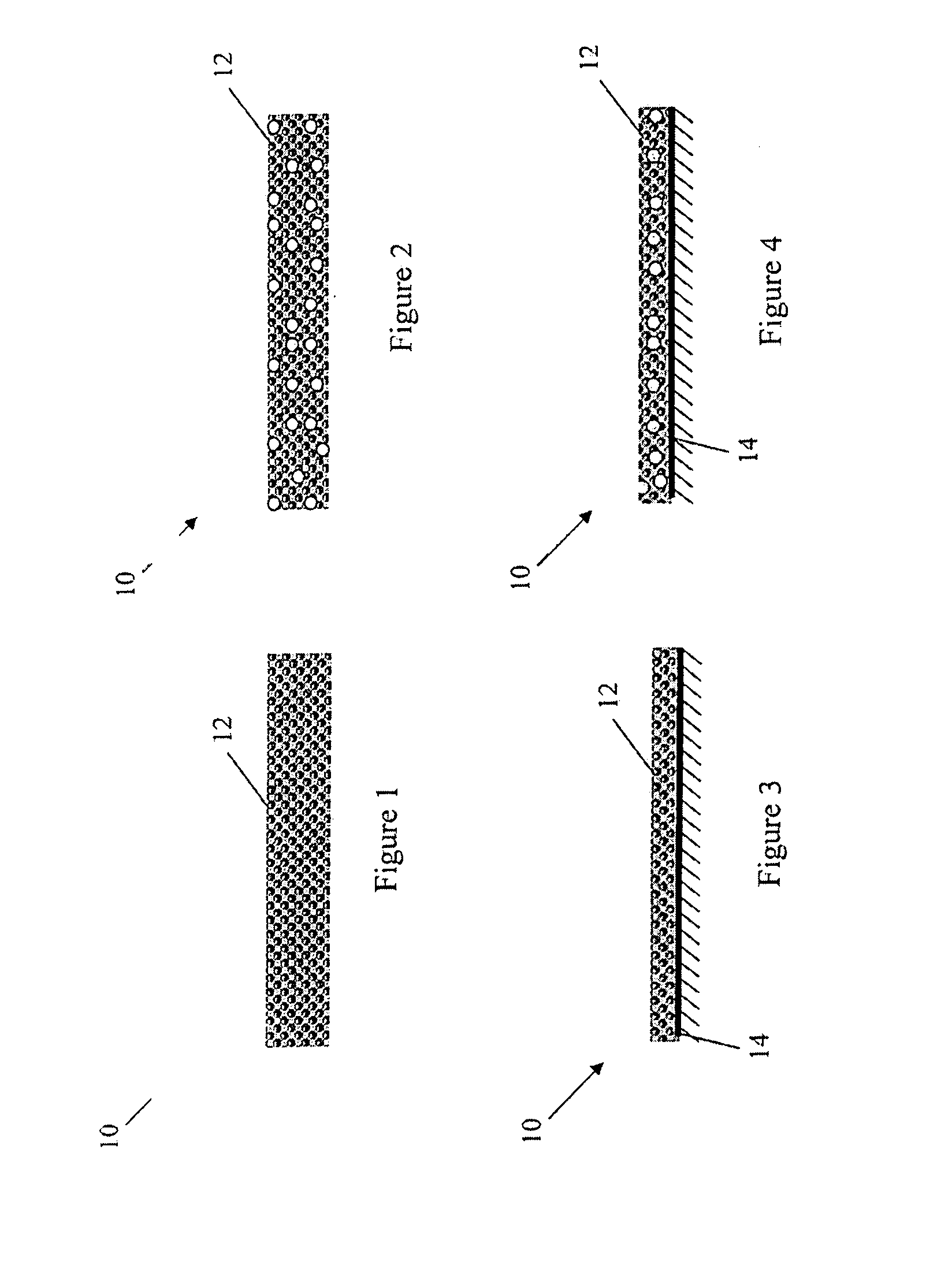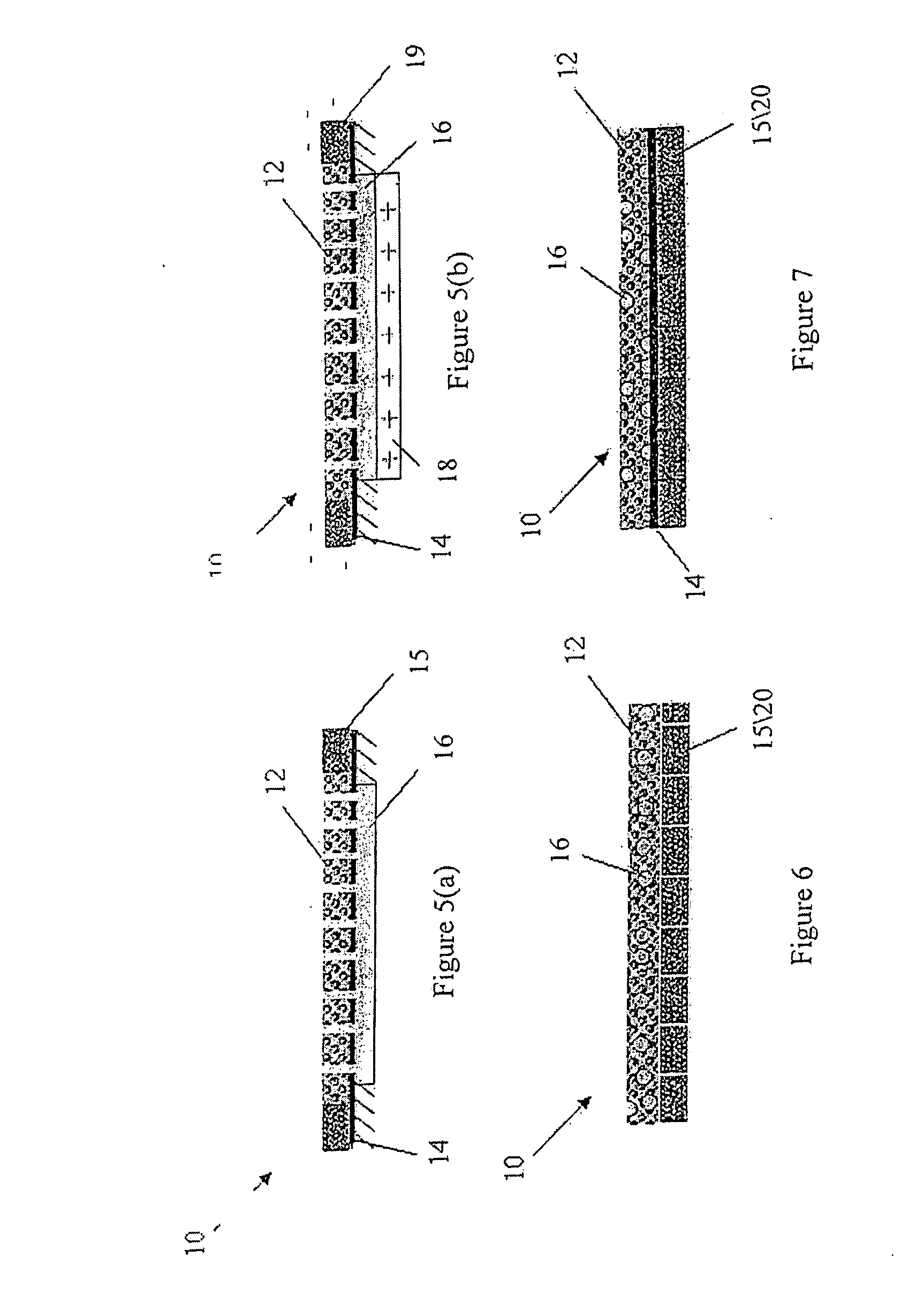Lumen - supporting devices and methods of making and using
a technology of supporting devices and lumen, applied in the field of medical devices, can solve problems such as significant failure, device failure, and device longevity of a few decades, and achieve the effects of reducing the risk of device failure, and improving the stability of devices
- Summary
- Abstract
- Description
- Claims
- Application Information
AI Technical Summary
Problems solved by technology
Method used
Image
Examples
example 1
Formation of a Dense Composite Oxide Layer Via Air Plasma Spray
[0074]A composite of spray dried powder spheres having an overall composition of 13 weight (wt) % TiO2, 13 wt % Y2O3, 10 wt % ZrO2, 6 wt % CeO2, and the balance of Al2O3 (commercially available from Inframat Corp. under the tradename of NANOX S2613), was used as a feedstock. The feedstock was plasma thermal sprayed, using a Metco 9 MB plasma spray system (all Metco products mentioned herein are sold by Sulzer Metco Ltd.), onto a metal substrate which had been sandblasted using alumina granules prior to thermal spraying. A mixture of argon and hydrogen gases was used in conjunction with a GH-type nozzle (Metco) to generate a hot and high-velocity plasma flame. The powder-feeding rate was between about 1.5 to about 2.0 pounds per hour (lb / hr), which corresponded to a deposition rate of about 50 to about 120 micrometers (μm) per pass. The substrate was preheated to a temperature of about 120 degrees Celsius (° C.), which wa...
example 2
Formation of a Dense Al2O3 Layer Via Air Plasma Spray
[0082]Angular, fused, and crushed Al2O3 powder (Metco 105SFP) was used as a feedstock. The feedstock was plasma thermal sprayed, using a Metco 9 MB plasma spray system, onto a metal substrate which had been sandblasted using alumina granules prior to thermal spraying. A mixture of argon and hydrogen gases was used in conjunction with a GP-type nozzle (Metco) to generate a hot and high-velocity plasma flame. The powder-feeding rate was between about 2.0 to about 2.5 lb / hr, which corresponded to a deposition rate of about 50 to about 120 μm per pass. The substrate was preheated to a temperature of about 120° C., which was maintained during the spray process when a small standoff distance and low gun traverse speed were selected. Representative plasma spraying parameters for the dense Al2O3 layer were as follows:
Plasma gases:[0083]Primary gas: Argon (100 PSI, 100 SCFH)[0084]Secondary gas: H2, (50 PSI)
Plasma power: 42 KW (600 A / 70 V)
S...
example 3
Formation of a Dense Composite Oxide Layer Via Air Plasma Spray
[0090]A composite of spray dried powder spheres having an overall composition of Cr2O3-5SiO2-3TiO2 (Metco 136F) was used as a feedstock. The feedstock was plasma thermal sprayed, using a Metco 9 MB plasma spray system, onto a metal substrate which had been sandblasted using alumina granules prior to thermal spraying. A mixture of argon and hydrogen gases was used in conjunction with a GH-type nozzle (Metco) to generate a hot and high-velocity plasma flame. The powder-feeding rate was between about 2.5 to about 3.0 lb / hr, which corresponded to a deposition rate of about 15 to about 30 μm per pass. The substrate was preheated to a temperature of about 120° C., which was maintained during the spray process when a small standoff distance and low gun traverse speed were selected. A cross-cooling jet was used to cool the substrate withl an air flow at about 40 PSI. Representative plasma spraying parameters for the dense compos...
PUM
| Property | Measurement | Unit |
|---|---|---|
| average grain size | aaaaa | aaaaa |
| thickness | aaaaa | aaaaa |
| porosity | aaaaa | aaaaa |
Abstract
Description
Claims
Application Information
 Login to View More
Login to View More - R&D
- Intellectual Property
- Life Sciences
- Materials
- Tech Scout
- Unparalleled Data Quality
- Higher Quality Content
- 60% Fewer Hallucinations
Browse by: Latest US Patents, China's latest patents, Technical Efficacy Thesaurus, Application Domain, Technology Topic, Popular Technical Reports.
© 2025 PatSnap. All rights reserved.Legal|Privacy policy|Modern Slavery Act Transparency Statement|Sitemap|About US| Contact US: help@patsnap.com



